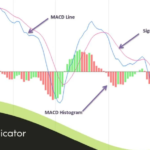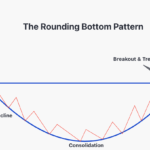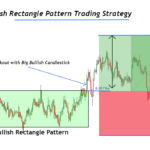
What is a Penny Stock?
A penny stock is the stock of a small, young company that is typically valued at less than $5.00 a share. Some penny stocks trade on large stock exchanges, yet most trade through over the counter (OTC) transactions. Due to the size of the company and the value of penny stocks, they normally trade with less frequency and thus tend to have lower liquidity. Consequently, it can be difficult for investors to sell their shares.
How to Pick a Successful Penny Stock
A penny stock’s low liquidity and high risk can cause sufficient losses for their investors. However, there are guidelines as to how to choose the right penny stock and potentially profit off its price movements. First, a potential penny stock investor should take a close look at the stock’s earnings. If a penny stock has growth that comes close to its 52-week high, it is probably more reliable than others. Secondly, it is important not to base your decisions off of penny stock newsletters. Oftentimes, penny stock newsletters have conflicts of interest that are available to read under their disclosure notice mandated by the SEC. Third, look for penny stocks with high trading volumes. The higher the trading volume, the healthier the penny stock. The last most defining rule is to maintain patience. Patience is equally important before purchasing as it is during holding. It is recommended by many experts to not buy what may seem to be a healthy penny stock right away. Instead, track its movements and how it trades before opting in.
Risks Involved
Penny stocks do have advantages for both new companies and investors. However, investors may also have negative experiences with penny stocks. Therefore, it is important to examine the risks involved. The primary reason that investments in penny stocks fail is that generally there is not enough information available to the investor about the company. Furthermore, the information that is available may not be reliable. As mentioned above, many penny stock newsletters have conflicts of interest when presenting what they may deem as profitable investments. In addition to the lack of information, penny stocks are also often traded on different platforms than larger stocks. Penny stocks mostly trade OTC and they may also be listed on “pink sheets”. Companies listed on “pink sheets” do not have to file with the SEC. Both stocks traded OTC and listed on “pink sheets” do not have to adhere to minimum requirements in order to remain on the exchange and therefore carry a degree of risk. Lastly, penny stocks generally have low liquidity and as such can become difficult for investors to sell. Perhaps the danger of low liquidity levels lies in the opportunity for traders to manipulate the prices of their stocks. Here’s how it works: when a penny stock is talked up, large amounts of the stock are purchased; then when investors purchase the stock, the scammers sell all of their shares. This means the penny stocks are subjected to fraud.
New Fads
Penny stocks have recently become popular for “rookie investors” or investors that trade on platforms such as Robinhood. Platforms, like Robinhood, that provide rookie investors a place to experiment can become quite problematic for prominent brokerage platforms that more experienced investors flock to. This is because the investors on Robinhood can buy and sell with ease and no direction and, consequently, oftentimes work against what Wall Street experts advise. For example, a lot of attention was given to a buying spree within the Robinhood community during the months of February and March. Prominent platforms sold in min-February and continue to sell today. What was the result? The community within Robinhood ate up stocks during February and March, some investors purchasing some of the best-performing stocks of the economic rebound. Young investors were profiting while Wall Street veterans laid low. Experienced investors reportedly found themselves frustrated. Not only did they miss out on the S&P’s 40% rally, but the inverse relationship between Wall Street experts and Robinhood amateurs has the capacity to affect the market. While most experts do not believe platforms such as Robinhood have deeply affected the overall state of the market, they do believe that certain slices of the market have changed. One of these such slices contains penny stocks. Investors who utilize Robinhood have more access to penny stocks. Many members of the community purchased low-priced stocks from many companies, even those who had declared bankruptcy. This strategy has worked for the Robinhood community thus far as the smallest 25 stocks of the Russell 2000 have averaged a 124% return since March; that’s in contrast to a 28% return on the biggest 25. Nevertheless, small stock prices may be distorted due to the large engagement from the Robinhood community. Acknowledging Robinhood’s impact on the market is important for investors who desire penny stocks. There is something to be said about the general lack of expertise associated, yet also something to be said for their incredible gains. If you’re thinking about getting into penny stocks, keep a close eye on Robinhood users’ impact.
Conclusion
Penny stocks are a necessary component of the economy as they help small businesses gain access to public funding. In addition, penny stocks have been successful for many investors as their low starting prices allow for significant appreciation in the future. Nevertheless, there are risks involved with owning penny stocks. They lack liquidity, there’s not a lot of information available about them, and the probability of fraud associated with penny stocks is much higher than other investments. However, the risks should not steer all investors away from penny stocks. Many investors have become very successful by betting on a small company’s future. To become profitable, an investor simply needs patience and the ability to think for themselves, not what the news may be saying.
Above the Green Line Watch List – Penny Stocks







